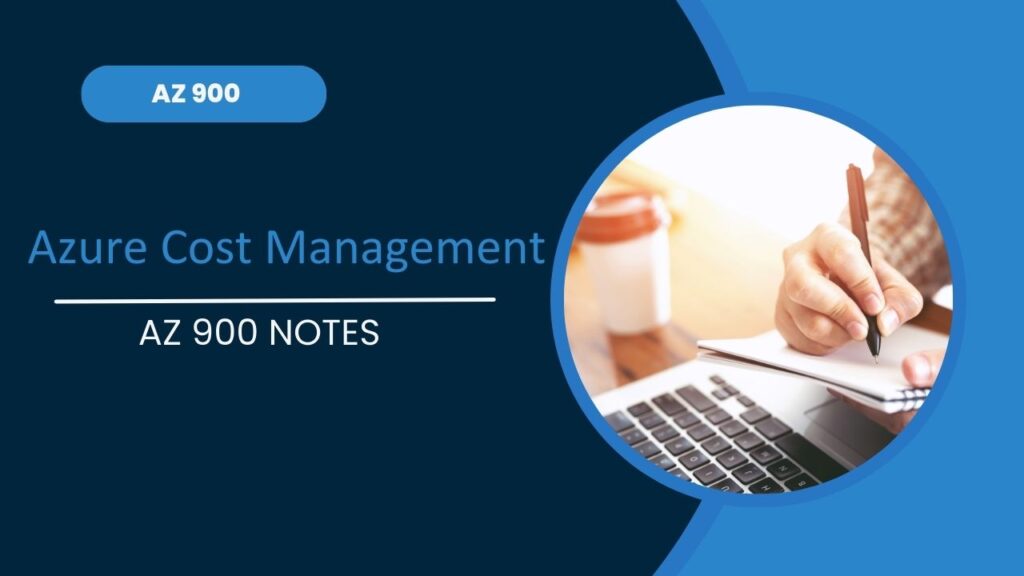In this article, we are going to know about Azure Cost Management, CapEX, OpEx and their pricing model. Azure provides a full set of cloud cost management capabilities and this includes a tool in Azure subscription to get more value out of the cloud and implement financial governance in your organization.

This article is mainly focused on per AZ 900 exam.
Expenditure Model
Let’s understand the expenditure model in Microsoft Azure.
Capital Expenditure (CapEx)
CapEx is a money investment to purchase infrastructure in your organization.
We need staff to manage the infrastructure or data centre. Basically, CapEx is a monetary investment by an organization to acquire/ update/ maintain physical assets such as data centres.
Examples of CapEx are Physical data centers for on-premise, Azure Reserved VM instances, Server Costs, and Storage Costs. Network cost, Technical Personnel. CapEx is non-recurring and benefits over a long period.
Q. Azure pay-as-you-go pricing is an example of CapEx.
Answer – No, It is an example of OpEx, not CapEx.
Note: Azure pay as you go pricing is an example of OpEx.
Operation Expenditure (OpEx)
So, in OpEx we do not include upfront costs, instead, we pay money to use a service or product.
OpEx is mainly an investment by an organization to run its daily business needs. The more we use, the higher the charges we pay.
In this way, OpEx includes Leasing software, auto-scaling charges, Water bills, electricity bills, and Azure pay-as-you-go service.
Price Model
Azure offers mainly 2 types of Pricing models.
- Consumption Based- Azure charges you for what you use and not for what you rent. For example – Azure Function
- Fixed Price- We pay for renting an Azure service, no matter whether they are being consumed or not. For Example – Provisioning VM instances, App services
Total Cost of Ownership Calculator (TCO)
TCO helps us estimate the cost savings you can check by migrating your workloads to Azure.
The estimation happens in 3 different steps –
- Define Workloads – Define your workloads of on-premise infra
- Adjust Assumptions – This is based on industry and geo-location. It includes Electricity cost, IT Labor cost, on-premise hardware cost, on-premise software license cost
3 View Report – This section describes the comparison between On-premise and Azure based on Timeframe for example 1 year, 2 years …. 5 years
Azure Pricing Calculator
It helps you to configure and estimate the costs for Azure services. For example – VM instances, storage accounts, Azure SQL DB, and Azure Cosmos DB.
To estimate the pricing, go to this link – https://azure.microsoft.com/en-in/pricing/calculator/
Cost affecting factors
As with other services, Azure also has multiple factors which can affect your billing/ invoice amount.
Below are the cost-deciding factors in Azure-
- Resource Type – It means what resources you want to use with what kind of configuration. For example – Storage, VM Types, CPU etc.
- Azure Marketplace – It’s a vendor product so in this case vendors decide the cost.
- Azure Regions – Service costs may vary from region to region.
- Data Transfer – How much data transfer you are doing in your billing cycle, can affect your invoice amount.
You may read this: Azure IoT, Big Data and Machine Learning – AZ 900 NotesData Transfer Cost
- Inbound data from on-premises to Azure is free
- Outbound data from Azure to on-premise is not free
- Data transfer between the same Azure region or same availability zone is free.
- Data traffic between different Azure regions or different availability zones is not free.
Additional Azure tools
Below are some additional Azure tools that aren’t a part of the Azure Cost Management.
However, they play an important role in the cost management process.
- Pricing Calculator – Use this tool to estimate your up-front cloud costs.
- Azure Migrate – Assess your current data centre workload for insights about what’s needed from an Azure replacement solution.
- Azure Advisor – Identify unused VMs and receive recommendations about Azure reserved instance purchases for best cost optimization.
- Hybrid Benefit – Use your current on-premises Windows Server or SQL Server licenses for VMs in Azure to save.
Want to read about Azure Storage: Microsoft Azure Storage – Benefits, TypesAn important point about Azure’s Costing
- Azure Cost Management helps users analyze and optimize their billing.
- Always estimate the cost before you do any deployment on Azure.
- Always stop resources when we don’t need them, it can save us money.
- Try to use managed services like IaaS, and PaaS.
- Choose Azure regions as per your business and organization standards.
- Select your CapEx and OpEx.
If you are preparing for AZ 900 certification, then follow this link - Microsoft Azure Fundamentals (AZ-900) Certification Sample Questions
Hope you like this article. Please share the blog link within your techie group.
